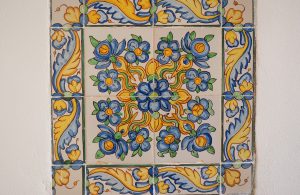Pottery is one of humanity's oldest crafts, with a history that traces back thousands of years. This ancient art form not only served practical purposes but also became a significant medium for cultural expression and storytelling. Journeying through the epochs, pottery provides a tangible connection to our ancestors, illustrating their daily lives, traditions, and innovations.
The dawn of pottery
The earliest known pottery was discovered in what is now China, dating back around 20,000 years. These primitive vessels were hand-shaped and used for storage and cooking, showcasing the early human necessity for practical solutions. With the advent of agriculture, communities settled and developed more complex societies, which saw the rise of pottery as a craft.
In the Fertile Crescent, around 7000 BCE, pottery-making witnessed significant advancements. Artisans began experimenting with kilns to achieve higher firing temperatures, resulting in more durable wares. This era marked a shift from purely functional pieces to those with artistic embellishments, reflecting cultural influences and the emergence of skilled craftsmanship.
The role of pottery in ancient civilisations
Pottery took on a profound role in ancient civilisations, serving both utilitarian and ceremonial purposes. In Mesopotamia, potters crafted intricately designed vessels that often featured mythical creatures and religious themes. These works not only served as containers but also played a key role in rituals and as offerings to deities.
Similarly, in Ancient Egypt, pottery was integral to daily life and the afterlife. Egyptian potters created a wide range of items, from simple bowls to elaborate funerary urns. Hieroglyphics and motifs depicting gods and pharaohs adorned these pieces, ensuring they were both functional and aesthetically significant. The art of pottery thus became deeply intertwined with religion and culture.
The evolution of pottery techniques in Greece and Rome
The Greeks elevated pottery to a new level of artistry and innovation. Around 1000 BCE, Greek potters began using the potter's wheel, allowing for greater precision and speed in vessel creation. The iconic red and black figure pottery emerged during this period, characterised by its detailed depictions of mythological scenes and everyday life. These pieces were highly sought after and became important trade commodities across the Mediterranean.
Rome inherited and expanded upon Greek pottery techniques, further refining the craft. Roman potters developed a range of wares, including the widely recognised terra sigillata, known for its smooth, glossy finish and intricate moulded decorations. Roman pottery was mass-produced and distributed throughout the empire, illustrating the vast reach and influence of Roman culture.
Pottery in the East
While the West experienced its own evolution of pottery, the East cultivated distinct styles and techniques. Chinese potters are renowned for their pioneering work in porcelain, with the earliest examples dating back to the Tang Dynasty (618–907 CE). This "white gold" was prized for its delicacy and translucency, becoming a symbol of status and wealth. Chinese porcelain became highly coveted in Europe, sparking a centuries-long fascination and eventual imitation known as "Chinoiserie".
Similarly, Japanese pottery developed unique characteristics, particularly during the Edo period (1603–1868 CE). The aesthetics of wabi-sabi, which embraces imperfection and simplicity, greatly influenced Japanese ceramics. Raku pottery, used in traditional tea ceremonies, exemplifies this philosophy, prioritising form and texture over elaborate decoration.
The influence of pottery on modern art and culture
The Industrial Revolution brought about significant changes to pottery production with the advent of mechanisation. Despite mass production, traditional craftsmanship persisted, and the late 19th and early 20th centuries saw a revival of interest in handmade pottery. Art movements such as the Arts and Crafts Movement championed the return to artisanal methods, emphasising the beauty of handcrafted wares.
In contemporary times, pottery continues to hold cultural significance and inspire modern artists. Ceramists today often blend traditional techniques with innovative designs, using pottery as a medium to explore themes of identity and sustainability. The craft remains a testament to the enduring human spirit of creativity and adaptation.
The legacy of pottery
Throughout history, pottery has bridged the gap between ancient civilisations and modern societies. Its evolution reflects humanity's ingenuity and adaptability, while its timeless allure continues to captivate and connect people across cultures. The legacy of pottery endures, not only as functional objects but as cherished works of art that tell the stories of our shared past.



















